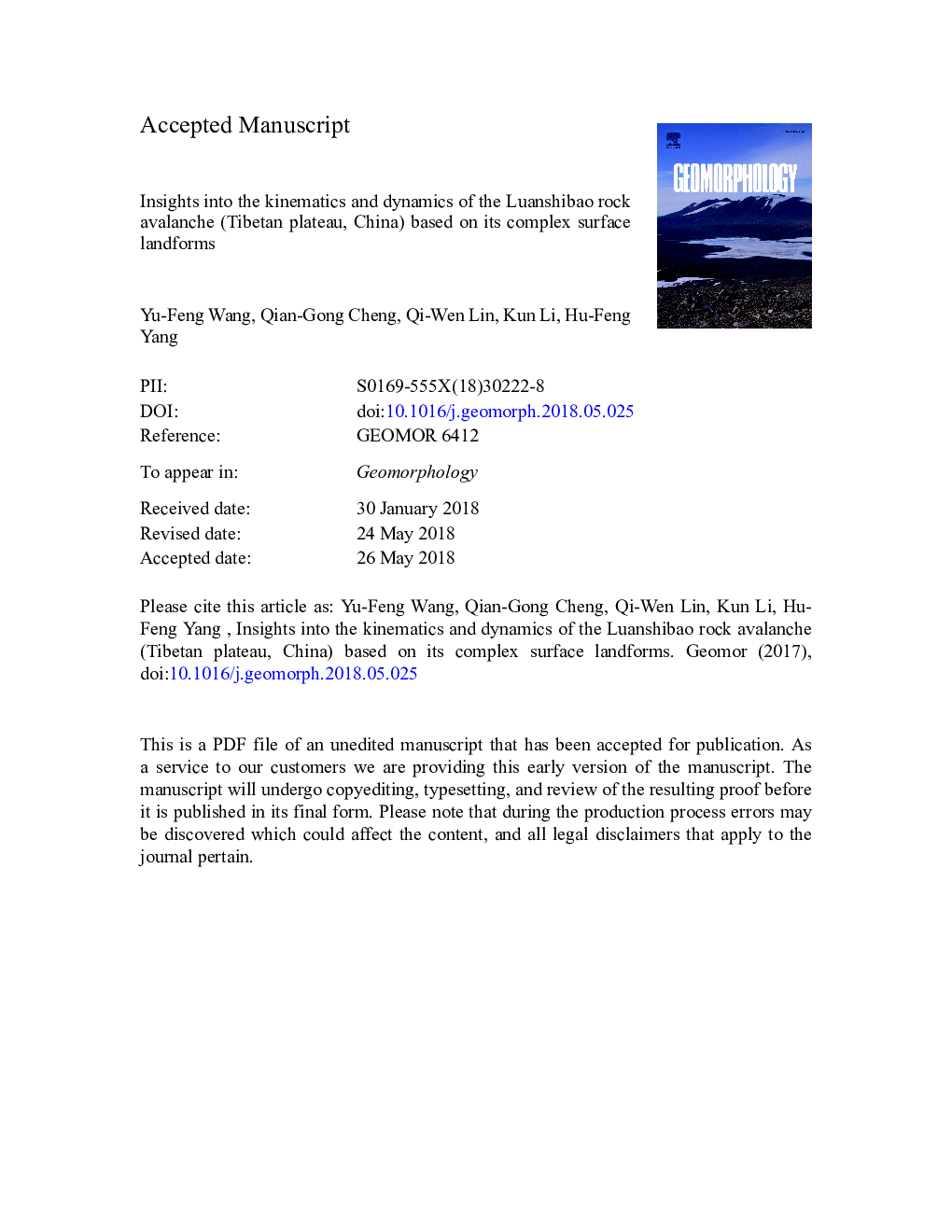| Article ID | Journal | Published Year | Pages | File Type |
|---|---|---|---|---|
| 8907971 | Geomorphology | 2018 | 35 Pages |
Abstract
Complex topographic features on the surfaces of rock avalanche deposits have been regarded as important indicators for understanding avalanche kinematics and dynamics. Based on a combination of remote sensing data and in-situ observations of surface landforms, including toreva blocks, transverse and longitudinal ridges, ridges separated by conjugate troughs, and hummocks, a giant Holocene rock avalanche on the Tibetan Plateau is recognized. This work aims to understand the kinematics of this event. In planview, the tongue-shaped rock avalanche exhibits a clear sequential distribution of various landforms. The translation zone (II) is characterised by toreva blocks originating from extension. In subzone III-1 of the accumulation zone (III), compression-related transverse ridges are well developed. Longitudinal ridges resulting from lateral velocity differences due to radial spreading are present in the front part of subzone III-1. Farther down, ridges separated by conjugate troughs (generated by a combination of compression and radial spreading) are common in subzone III-2. Subzone III-3 is characterised by abundant scattered hummocks with circular to oval shapes. Based on the distributions of these landforms, this rock avalanche is proposed to have mainly experienced a motion featuring laminar flow with radial spreading in its distal and marginal parts. During transport, three distinct processes appear to have occurred in the avalanche mass from the proximal to the distal zones: extension-dominated sliding in zone II, compression-dominated sliding in subzones III-1 and III-2, and rapid radial spreading in subzone III-3.
Keywords
Related Topics
Physical Sciences and Engineering
Earth and Planetary Sciences
Earth-Surface Processes
Authors
Yu-Feng Wang, Qian-Gong Cheng, Qi-Wen Lin, Kun Li, Hu-Feng Yang,
